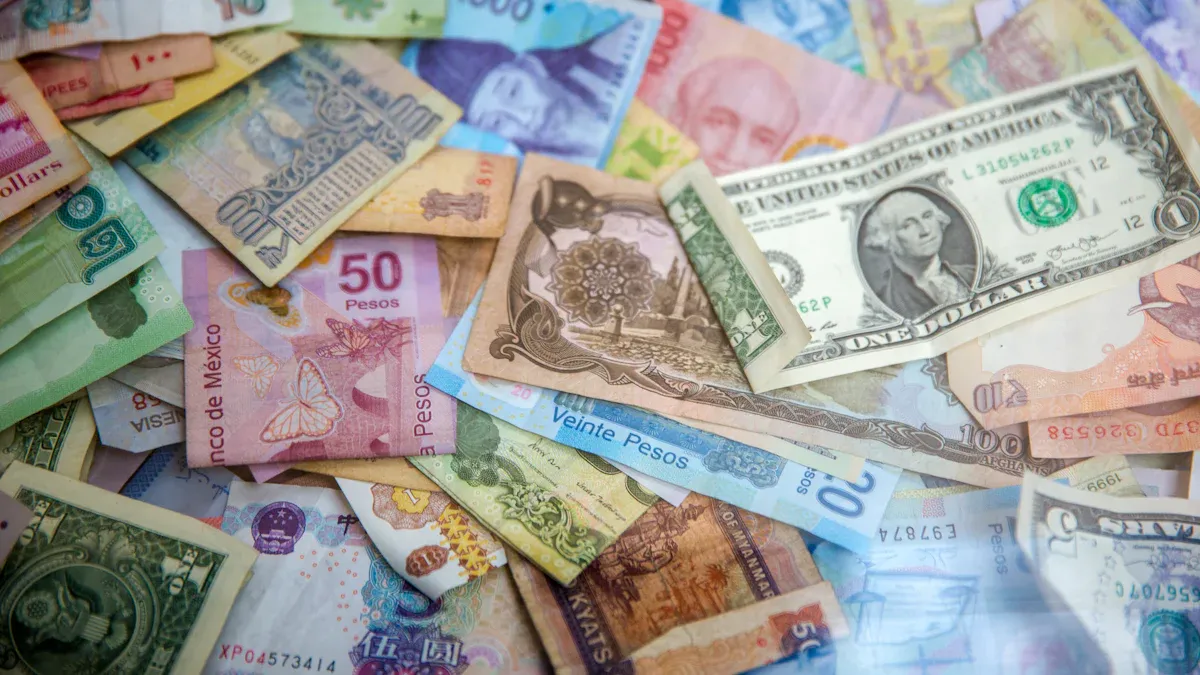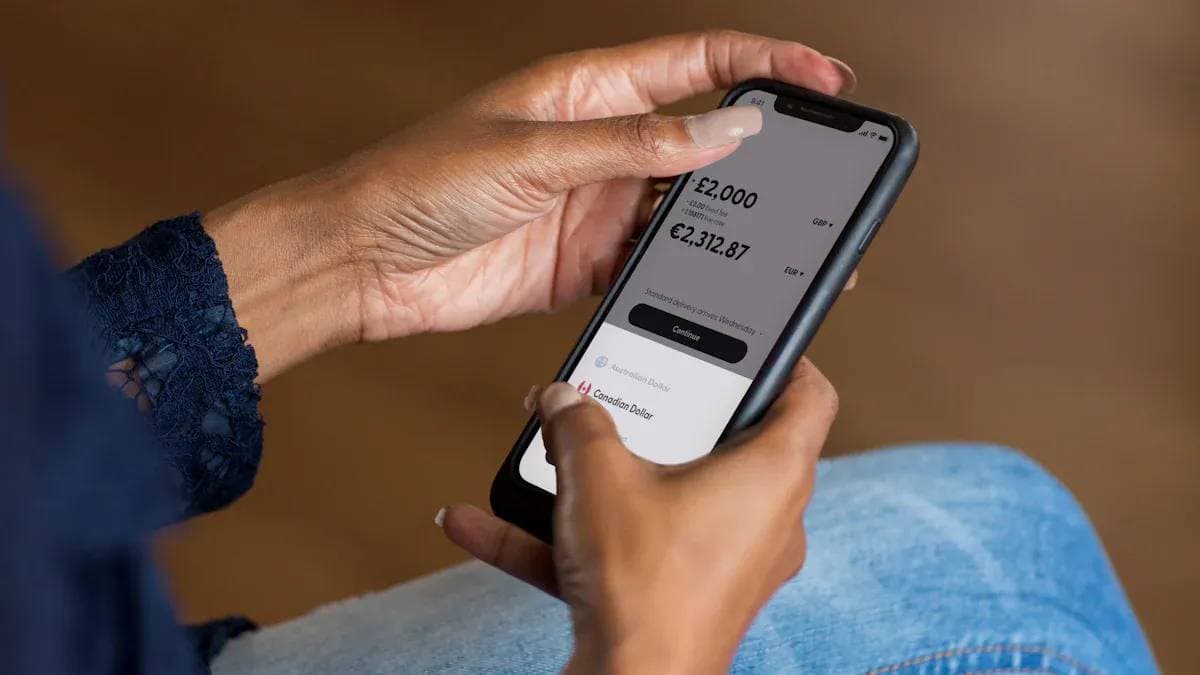- EasyCard
- Trade
- Help
- Announcement
- Academy
- SWIFT Code
- Iban Number
- Referral
- Customer Service
- Blog
- Creator
Overseas Remittances to Family: How to Safely Deliver Full Love and Care

Image Source: unsplash
Every festival doubles the longing for loved ones, and a remittance crossing oceans carries your thoughts and care for your family. You are not alone; in 2023, the total amount of funds sent home like yours reached approximately 656 billion USD. But faced with a variety of overseas remittance methods, you may worry about high fees, unfavorable exchange rates, slow arrivals, or even fund safety issues. This article is a clear action guide aimed at helping you find the safest, most economical, and fastest path to ensure this love reaches them intact.
Key Takeaways
- When choosing a remittance method, you should prioritize safety, total cost, and arrival speed.
- Online remittance platforms usually have low fees and fast speeds, suitable for daily small-amount remittances.
- Traditional bank wire transfers are secure but expensive and slow, suitable for large-amount remittances.
- Traditional remittance companies are suitable when family urgently needs cash or has no bank account.
- Before remitting, you must carefully verify the recipient’s information to avoid scams.
Three Major Decision Factors for Overseas Remittances

Image Source: unsplash
Choosing the right overseas remittance method is like selecting the most reliable courier for your love package. You need to comprehensively consider the following three core factors to ensure every cent reaches your family safely and efficiently.
1. Safety: Verify Credentials and Technical Protections
Your fund safety comes first. You need to choose remittance services regulated by official authorities. Legitimate platforms must hold relevant financial licenses, meaning their operations are supervised by government agencies.
Tip: How to Verify Platform Credentials? Before using a platform, you can check the bottom of its official website, where it usually lists its regulatory bodies and license information in major global markets. For example:
Country Regulatory Body Main Responsibilities United States Consumer Financial Protection Bureau (CFPB) Protect consumers and ensure fair and transparent financial markets. United Kingdom Financial Conduct Authority (FCA) Supervise the financial services industry and protect customer funds.
In addition to compliance credentials, strong technical protections are equally essential. A reliable platform typically employs the following technologies to protect your account and data:
- Data Encryption (SSL/TLS): Ensures that information you enter on the website or App is not stolen during transmission.
- Multi-Factor Authentication (MFA/2FA): In addition to a password, requires a second verification like a mobile verification code for login or large transactions, greatly enhancing account security.
2. Total Cost: Fees and Exchange Rates
The total cost of remittance consists of two parts: “fees” and “exchange rate margins.” According to World Bank data, the average cost of sending $200 globally in the fourth quarter of 2023 was about 6.4%.
Fees are usually fixed or proportional and relatively transparent. But the real “hidden” cost often lies in the exchange rate.
What is the “mid-market rate”? This is the “real exchange rate” for interbank transactions, without any additional fees. Many banks and remittance institutions add a 2%-4% markup to this rate for profit, and this portion is not explicitly disclosed to you. Choosing a platform that offers or is close to the mid-market rate can save you a significant amount.
3. Speed and Convenience: Arrival Time and User Experience
You certainly want your family to receive the money as soon as possible. The speed differences between methods are huge.
- Traditional Bank Wire Transfer: Usually takes 1-7 business days to arrive, especially when involving multiple intermediary banks.
- Online Remittance Platforms: Many platforms use modern payment networks, with funds often arriving in minutes or hours, and support 7x24 operations via mobile App with instant arrival notifications.
A convenient user experience is also important. A good platform should provide a clear interface, simple steps, and real-time progress tracking, allowing you to monitor the remittance status anytime.
Comparative Analysis of Mainstream Remittance Methods
After understanding the three major decision factors, let’s dive into analyzing several mainstream remittance methods on the market. Each has unique pros and cons, suitable for different scenarios. Choosing the most suitable one for you and your family can make this heartfelt delivery smoother.
1. Traditional Bank Wire Transfer
Bank wire transfer is the oldest and once the most mainstream international remittance method. You can send funds directly from your bank account to your family’s bank account via bank counter or online banking.
-
Safety: Extremely high. Banks are strictly regulated by financial laws and process transactions through the Society for Worldwide Interbank Financial Telecommunication (SWIFT) network, providing the highest level of fund security.
-
Total Cost: Expensive. This is the biggest drawback of bank wire transfers, with costs usually comprising three parts:
- Outgoing Fee: Your bank charges a fixed fee. Depending on the bank, this may be between $25 and $50 USD, sometimes higher.
- Exchange Rate Markup: The exchange rate provided by banks is usually not the real “mid-market rate” but includes a 1% to 5% markup. This means for every $10,000 USD remitted, you may pay an extra $100 to $500 USD just on the exchange rate.
- Additional Fees: Before reaching the final recipient bank, the remittance may pass through one or more “intermediary banks,” each potentially charging a $15 to $50 USD processing fee. The recipient bank may also charge an incoming fee.
Fee Overview: International Wire Transfer Fees for Major U.S. Banks
Note: The above chart only shows incoming fees; outgoing fees are usually higher.
-
Speed and Convenience: Slow. A wire transfer usually takes 1 to 7 business days to arrive, and the operation requires filling in complex recipient bank information (such as SWIFT/BIC code), which if incorrect may lead to failure or delay.
| Advantages | Disadvantages |
|---|---|
| Extremely high security, funds protected by bank systems | Very expensive total cost, including multiple fees and exchange rate markups |
| Suitable for large remittances with high single-transfer limits | Slow speed, cannot meet urgent needs |
| Wide global coverage, reachable to almost all countries | Complex operation, requires detailed and accurate bank information |
Applicable Scenarios: When you need to make a large, non-urgent remittance over $10,000 USD, such as paying tuition or home purchase funds, and prioritize fund safety while not minding higher costs and slower speeds, bank wire transfer remains a reliable choice.
2. Professional Online Remittance Platforms (Wise, Remitly)
In recent years, online remittance platforms represented by Wise and Remitly have risen rapidly. They leverage innovative fintech to provide better costs and speeds than traditional banks.
- Safety: Reliable. These platforms also hold financial regulatory licenses in various countries (such as UK FCA) and use data encryption, multi-factor authentication, and other technologies to protect your funds and account security.
- Total Cost: Low and transparent. This is their biggest advantage.
- Wise (formerly TransferWise): Known for using the “mid-market rate,” charging only a small, transparent service fee. You can clearly see all fees and the final arrival amount before remitting.
- Remitly: Flexible fee structure, but the exchange rate may include a small markup. It usually offers two options: the lower-cost “Economy” mode and the faster “Express” mode.
- Speed and Convenience: Extremely fast. The entire operation can be completed on a mobile App, very convenient.
- Wise: Over 60% of remittances arrive instantly, 95% within 24 hours.
- Remitly: The “Express” mode usually arrives in minutes, especially suitable for remittances to Alipay, WeChat, or bank cards.
- Other platforms like Xe and Azimo also provide similar services, Azimo is particularly fast for remittances to mobile wallets.
| Platform | Advantages | Disadvantages |
|---|---|---|
| Wise | Extremely transparent fees, uses real market exchange rates, low cost | Fewer cash pickup options |
| Remitly | Flexible receipt methods (bank, cash, mobile wallet), fast speed | Exchange rates may not be as good as Wise, fees relatively less transparent |
Applicable Scenarios: For the vast majority of daily small-to-medium remittances (e.g., under $5,000 USD), online platforms are the best choice for balancing cost, speed, and safety. Whether sending living expenses or holiday red packets to family, these platforms ensure your love arrives efficiently and at low cost.
3. Traditional Remittance Companies (Western Union, MoneyGram)
Western Union and MoneyGram are household names, with their biggest feature being a vast global network of offline agent locations.
- Safety: Compliant. As long-established multinational companies, they are strictly regulated. However, be cautious: since they support cash pickups and transactions are irreversible, such services are sometimes exploited by criminals for scams. Always confirm that the recipient is someone you know and trust.
- Total Cost: Relatively high. Their fees are usually higher than online platforms, especially when choosing “offline payment, cash pickup” urgent services. Additionally, their exchange rates include significant markups.
- Speed and Convenience: Cash services are extremely fast. Their core advantage is “minute-level” cash pickup. After you pay online or at an offline location, your family can pick up cash in as little as a few minutes with ID and pickup code at over 500,000 Western Union locations or over 350,000 MoneyGram locations worldwide.
| Advantages | Disadvantages |
|---|---|
| Vast cash pickup network, global coverage | High fees and exchange rate costs, especially for urgent services |
| Extremely fast cash arrival, resolves urgent needs | Cash pickup has certain security risks, and recipients must visit locations in person |
| Recipients do not need bank accounts | Single-transfer amount limits |
Applicable Scenarios: When your family urgently needs cash or lives in areas with limited banking services and has no bank account, Western Union and MoneyGram’s cash pickup services are irreplaceable.
4. Emerging Remittance Methods (Paysend, Digital Currencies)
In addition to the above mainstream methods, some more innovative options are emerging, showing unique advantages in specific scenarios.
- Paysend: This is a service focused on “card-to-card” remittances. You only need to enter the recipient’s name and 16-digit bank card number to send money directly to their Visa or MasterCard.
- Advantages: Extremely simple operation, fixed and low fees (e.g., fixed $2 USD from the U.S.), very suitable for small, frequent remittances.
- Disadvantages: Exchange rates may have slight markups, and there are single-transfer limits.
- Applicable Scenarios: If you frequently send small amounts to family and they have a bank card, Paysend’s fixed low-fee model is very attractive.
- Digital Currencies (e.g., USDT and other stablecoins): Cross-border transfers via blockchain technology can theoretically achieve low-cost, near-real-time global payments.
- Advantages: Fast speed, not restricted by bank hours.
- Disadvantages: Extremely high risk, not recommended for ordinary users.
- Complex Operation: Both sender and recipient need to understand wallets, private keys, etc.; the barrier is high, and errors may result in permanent fund loss.
- Price Volatility: Even stablecoins claiming 1:1 peg to USD have de-pegging risks.
- Compliance Risks: Global regulatory policies for digital currencies vary greatly and are constantly changing; in many regions (including mainland China), their legal status is ambiguous or strictly restricted, potentially leading to account freezes or legal issues.
Risk Warning: Given their high volatility, operational complexity, and unclear regulatory environment, we strongly advise against using digital currencies as the primary method for remitting to family. Funds carrying love should not be exposed to such enormous risks.
Remittance Practical Checklist and Pitfall Avoidance Guide

Image Source: pexels
Good preparation makes the remittance process hassle-free. Before clicking the “send” button, take a few minutes to check the following list to effectively avoid unnecessary delays and risks, making your love journey smoother.
1. Information Preparation Checklist Before Remittance
Ensuring you have accurate information is the first step to successful remittance. Incomplete or incorrect information is the most common cause of delays or failures.
Recipient Information You Need to Prepare:
- Recipient’s Full Name: Must exactly match the name on their bank account, not a single letter wrong.
- Recipient’s Address and Phone: Ensure the information is up-to-date and valid.
- Bank Account Information:
- Bank Name and Address: Full name and address of the bank branch where the recipient’s account is held.
- Account Number or IBAN: IBAN (International Bank Account Number) is the standard format used in Europe and other regions.
- SWIFT/BIC Code: Unique code to identify global banks, crucial for international wire transfers.
Tip: Proof of Funds Source for Large Remittances If you are making a large overseas remittance (e.g., from property sales or investments), the platform may require proof of funds source per anti-money laundering regulations, such as sales contracts, bank statements, or lawyer letters. Preparing these in advance can speed up the review process.
2. How to Avoid Common Mistakes and Risks
Mastering some basic tips can help you easily avoid common “pits” in the remittance process.
- Double-Check Information: Name spelling, bank account number, SWIFT code are the three most error-prone areas. Confirm with the recipient again before sending.
- Note Transfer Limits: Different platforms and banks have daily or per-transfer limits. For example, some platforms have a daily limit of $50,000 USD. Check restrictions before large remittances.
- Avoid Holidays: Remittances are affected by bank holidays in your location and the recipient’s. To avoid delays, operate on business days.
Beware: Identify and Prevent Remittance Scams Scammers may impersonate remittance companies or your family. Stay vigilant:
- Beware of “Phishing” Messages: Do not click suspicious links in unknown emails or texts asking you to “update account” or “verify information.”
- Phone Verify Changes: If family suddenly asks you to remit to a new account, confirm directly via phone or another channel to prevent account theft.
- Use Official Apps: Download remittance apps only from official channels like Apple App Store or Google Play Store.
There is no absolute “best” for overseas remittances to family, only the most suitable choice for you and your family.
Final Advice for You:
- Daily Remittances: For most small-to-medium living expenses, prioritize online platforms like Wise with transparent fees. They are the best for balancing cost, speed, and safety.
- Urgent Cash: When family needs cash urgently, traditional companies like Western Union still have value.
Spend a few minutes doing homework to ensure this love crossing oceans arrives safely and completely.
FAQ
We have compiled some common questions you may encounter during the remittance process to provide quick answers.
How Should I Choose the Remittance Method Most Suitable for Me?
Your choice depends on your specific needs.
- Daily Small Remittances: Choose online platforms (like Wise) for low cost and fast speed.
- Urgent Cash Needs: Consider traditional companies (like Western Union) for minute-level cash pickup.
- Large Transfers: Bank wire transfers offer high security and are a stable choice.
Do I or My Family Need to Pay Taxes on This Remittance?
Most countries have annual tax-exempt amounts for inter-personal gifts. Remittances from overseas relatives are usually not considered taxable income for the recipient. For example, in the U.S., the giver has a certain annual exemption. In mainland China, gifts between immediate family are also tax-exempt.
Important Note: Tax laws are complex and vary by location. We recommend consulting a professional tax advisor for accurate information tailored to your situation.
What If I Enter Wrong Information or Want to Cancel the Remittance?
Act immediately.
- Contact the customer service of the remittance platform you used right away.
- Provide your transaction details or reference number.
- If the funds have not yet been paid to the recipient, the platform can usually help you modify information or cancel the transaction and refund. Speed is key.
*This article is provided for general information purposes and does not constitute legal, tax or other professional advice from BiyaPay or its subsidiaries and its affiliates, and it is not intended as a substitute for obtaining advice from a financial advisor or any other professional.
We make no representations, warranties or warranties, express or implied, as to the accuracy, completeness or timeliness of the contents of this publication.




Contact Us
Company and Team
BiyaPay Products
Customer Services
is a broker-dealer registered with the U.S. Securities and Exchange Commission (SEC) (No.: 802-127417), member of the Financial Industry Regulatory Authority (FINRA) (CRD: 325027), member of the Securities Investor Protection Corporation (SIPC), and regulated by FINRA and SEC.
registered with the US Financial Crimes Enforcement Network (FinCEN), as a Money Services Business (MSB), registration number: 31000218637349, and regulated by FinCEN.
registered as Financial Service Provider (FSP number: FSP1007221) in New Zealand, and is a member of the Financial Dispute Resolution Scheme, a New Zealand independent dispute resolution service provider.



















